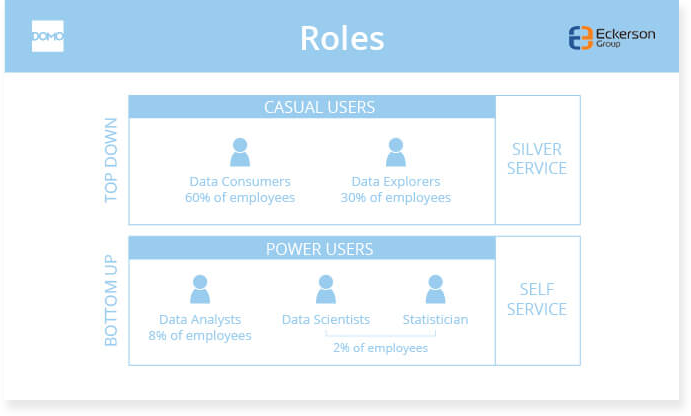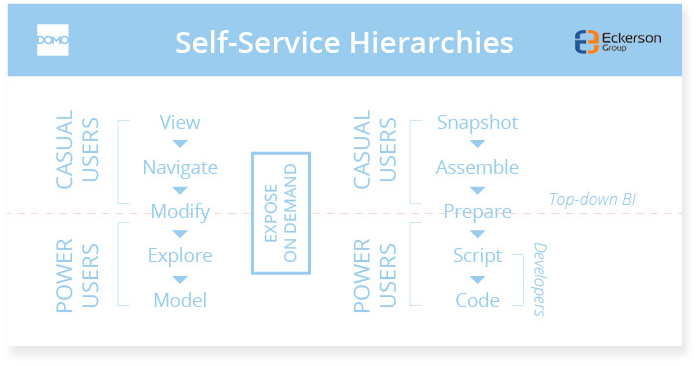
Se ahorraron cientos de horas de procesos manuales al predecir la audiencia de juegos al usar el motor de flujo de datos automatizado de Domo.
The technology to manage and leverage data is changing so rapidly that traditional categories like business intelligence are evolving to accommodate more dynamic and complete software products.
One such category that has emerged is self-service business intelligence. With self-service BI, business users are able to filter, segment, and analyze their data like never before—without the in-depth technical knowledge that most analytical systems have required in the past.
But as technology changes and user needs evolve, it begs the question: What exactly is self-service BI in 2017?
Domo’s Eric Buckley interviewed Wayne Eckerson to answer just that. Read below to hear Wayne’s answers to some fundamental questions regarding self-service analytics and BI in today’s market.
Wayne Eckerson is Principal Consultant at the Eckerson Group, and has been a thought leader in the self-service BI and analytics space for the past 15 years. Wayne specializes in coaching businesses to leverage data and technology for better insights and results.
From Wayne’s perspective, “one size does not fit all in terms of self-service, which means that when you start to implement a self-service analytics environment, you first and foremost have to know your users.”
Wayne often starts his consulting engagements at this point, asking: “Who are your users? Both on your team, and out in the business units doing BI of any sort, in terms of creating as well as consuming?”
Wayne continues to explain that “a manager might see it as the ability to roll down on, pivot, or sort data in a chart. A developer might see it as the ability to build their own analytics system from the ground-up. It’s imperative for our technologies and processes to have the flexibility to suit each unique need on your user spectrum and the supporting strategy to deliver that flexibility to every single user.”
According to Wayne, to really do self-service right, you have to understand your users and create a framework for their needs. Then you have to take an inventory of everyone in your organization that needs access to the self-service tools and find out where they belong within that framework.
“If you don't do that, I don't think you can make much headway with self-service.”
Wayne’s recommended framework has two types of classification: user type and functionality hierarchy, each with two subcategories.
Step 1: Identify your users.
Who are your “casual users,” such as employees and managers, and who are your “power users,” like data scientists and software developers?

Casual users just want to pull reports or view their KPI dashboard. Eckerson calls these “silver service” users, because the right platform will deliver information, reporting, and functionality on a silver platter, tailored to their role and needs.
“The other group – which is really just 10% of your users at best – consists of the power users who really do need self-service. These power users need true ad hoc self-service toolsets and access to data analysts. These are your data scientists and computer scientists who can programmatically access data and ideally create analytical or predictive models as well.”
Step 2: Specify how they use (or want to use) BI.
“User types have certain user patterns, so functionality is divided into data consumption and production hierarchies. The consumption hierarchy allows data organization and exploration across reporting, dashboards, views, and data modeling. The production hierarchy includes increasingly sophisticated abilities to build the platform at its core.”

Self-service platforms give users the ability to “expose on demand”—clicking a single icon to reveal all ad hoc capabilities for building their ideal BI platform.
“When used properly, self-service is a proverbial win-win—the Holy Grail of BI. Users can get what they want, when they want it, how they want it, without relying on other technical resources or IT teams,” Wayne explains.
Some key benefits include:
Having a specific plan and the right tool can help avoid these pitfalls:
You know what you need from your self-service tools—now let Domo deliver the ideal system to your fingertips. Try Domo for free here!
